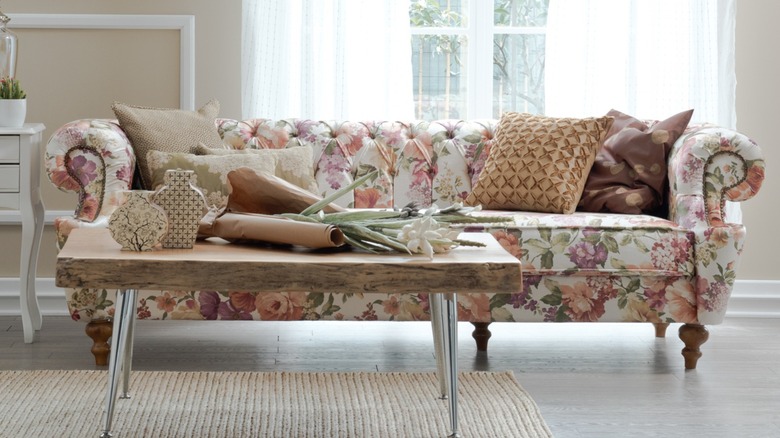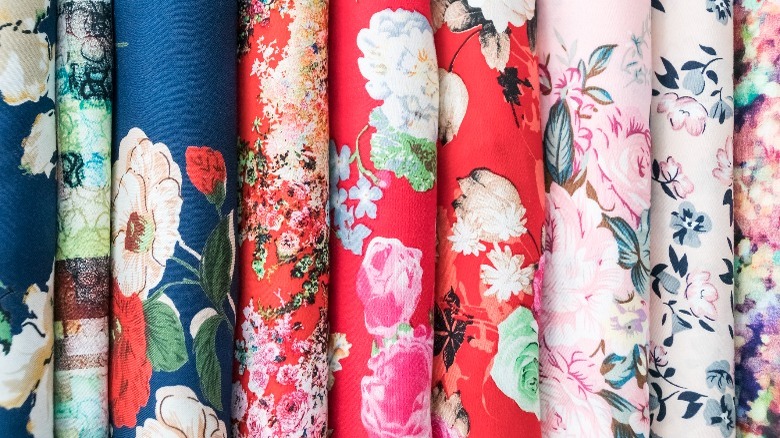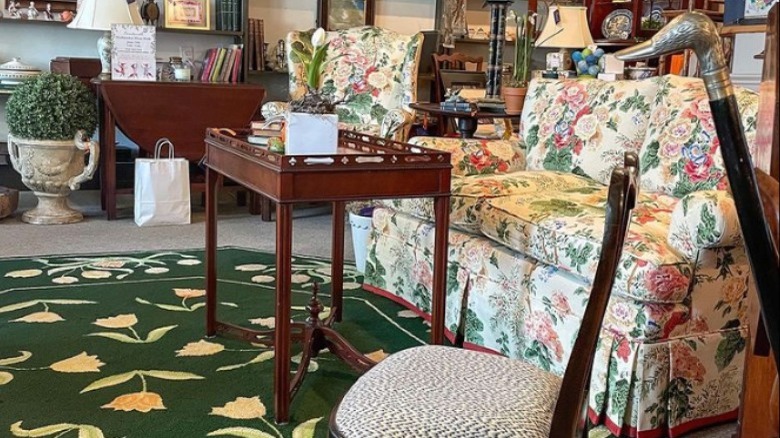Is Chintz Furniture Coming Back In Style?
According to The New York Times, chintz — a boldly patterned and polished cotton fabric — is reentering the interior design scene. In their assessment, it's a rebuke of the minimal style umbrella that has overshadowed home decor trends in the last few decades. The spare, simple aesthetic has started to overstay its welcome, while boisterous chintz and the maximalism it tends to accompany poses an attractive change. Chintz is often used alongside traditional components with a welcoming and classic connotation, such as antique furniture, hand-knotted carpets, and heavy comfortable fabrics like wool, velvet, and chenille.
The over-the-top decorative elements create spaces that are richly layered and invite personalization. Designer Jonathan Rachman hopes we'll be seeing more of the style, which he believes is a truer representation of a home's occupants than the standard furniture showroom trends. In an updated take, the genteel and lady-like vibes have been given a good dose of energy and a little wickedness via mad pattern mixes and an eclecticism that throws strange bedfellows together into a riotous, glorious dream. For those who crave quiet, subtle spaces, chintz, ruffles, and tendrilled florals might be a nightmare. Yet for the maximalist or those bored with everything-gray-decor, it's a thrilling development.
A brief history of chintz
Per the how-to sewing and pattern website Treasurie, chintz is typically a large floral, although prints can feature stripes or other geometrics, and is often utilized in curtains, bedding, and furniture upholstery. The textile originated in India, and its popularity grew as its trade into the European market became customary in the 17th century. The castaway furniture and drapery fabrics were incorporated into apparel by servants, and this eventually created a new fashion. At one time, the textiles were so desired that France and England implemented laws prohibiting their import or use in clothing and furniture. However, the forbidden nature most likely increased the appeal, and people devised ways to continue indulging themselves with the intricate and colorful motifs. In the late 1700s, French and English mills were able to satisfactorily reproduce the fabrics, leading to the design of one of the most iconic chintz patterns, the French toile du Jouy.
More recently, Jackie Kennedy exposed the masses to an orange-blossom bedroom by way of a televised White House tour, bringing more than the pillbox hat into hearts and homes. Two decades later, the excesses of the 80s celebrated chintz with slipcovered sofas dubbed shabby chic decor, a cult-like following of the Prince of Chintz, interior designer Mario Buatta, whose calling card was an extravagant use of lush blooming patterns, and last but not least, three-piece floral suits (via Vinterior).
Why is chintz becoming popular again
According to the lifestyle website Country and Townhouse, chintz florals align with a current trend called biophilia, which uses design and architecture to soothe and connect us with the natural world. The outlet also suggests we find comfort in the nostalgia and grandma aesthetic associated with the style. Furthermore, they point to recent movies and docudramas, such as "Spencer" and "The Crown," as catalysts for the fabric's rising popularity.
Antique dealer and interior designer Karen Helme of Found cheered, "Chintz is back and we're not mad about it!" on a recent Instagram post featuring the wing chair above. As seen here, chintz sofas are often skirted or tufted, and the fabric is complemented with additional florals, stripes, plaids, and animal prints. In lavish homes, chintz is frequently applied as drapery on a traditional four-poster bed canopy, or walls and furniture are covered in the same fabric for an immersive space that can be overwhelming to some. The beauty and impact of one bold chair or a set of accent pillows is a more digestible — and affordable — way to enjoy the vitality and whimsy of chintz designs. To update the historically-weighted character, introduce a modern cocktail table or an oversized abstract artwork into the space. Optionally, choose a fiercely bold or bright background to temper its sweetness.


